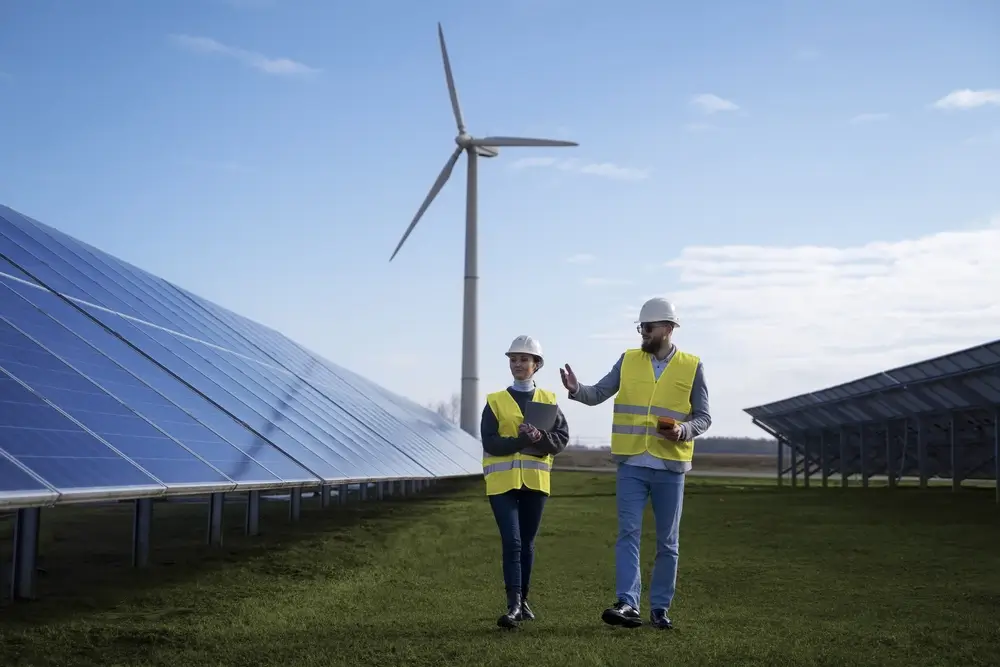In an age where environmental concerns and energy security are paramount, the traditional centralized model of energy generation is facing a transformative shift. Distributed energy generation is one of the parts of that shift. It is an innovative approach that is revolutionizing how we produce and consume power.
Distributed Energy Generation (DEG) is an innovative concept that challenges the traditional centralised power generation model. It involves generating electricity from multiple small-scale sources closer to the end users. This contrasts with the conventional power method developed at large centralised power plants and transmitted through long-distance transmission lines.
As the world moves on Its way to a sustainable future, DEG is increasingly becoming the preferred choice for meeting energy demands while reducing carbon emissions.
Read further to learn more about the limitations of distributed energy generation and the importance of overcoming these limitations.
Limitations of Distributed Energy Generation
With its advantages, DEG also comes with its limitations. Some of which are:
- High Initial Costs: Implementing DEG systems often require a significant upfront investment. The cost of purchasing and installing equipment such as solar panels, wind turbines, or microgrids can be significant. This makes it challenging for many individuals or communities to afford such systems.
- Limited Scalability: Distributed energy generation is typically more suitable for small-scale applications than large-scale energy demands. It can effectively cater to the energy needs of individual homes, businesses, or neighbourhoods. Therefore, it becomes challenging to scale up and meet the demands of larger industrial or urban areas.
- Intermittent and Variable Output: Renewable energy sources such as solar and wind are subject to natural fluctuations. The availability of sunlight or electricity can vary throughout the day and seasons, leading to intermittent and variable energy output. This variability makes it difficult to rely solely on DEG to meet consistent energy demands.
- Energy Storage Requirements: To address the intermittent nature of renewable energy sources, energy storage systems like batteries are often used. However, implementing and maintaining energy storage technologies can add to the DEG system’s overall cost and complexity.
- Grid Integration Challenges: Integrating DEG systems into existing electrical grids can be complex and require substantial upgrades to the grid infrastructure. The grid must handle bidirectional power flow, manage decentralised generation, and maintain stability despite the variability introduced by renewable sources.
- Importance of Overcoming These Limitations
Overcoming the limitations of distributed energy generation requires careful planning, innovative solutions, and coordinated efforts. Mentioned below are some of the steps to overcome those limitations:
- Efficient Energy Storage: One major limitation of distributed energy generation is the intermittent nature of renewable energy sources. To overcome this, the focus should be on developing efficient energy storage systems, such as advanced batteries, pumped hydro storage, or hydrogen storage.
- Smart Grid Integration: Integrating DEG into smart grids can help better manage and coordinate energy production and consumption. This integration facilitates the seamless incorporation of distributed energy sources into the existing infrastructure.
- Microgrid Implementation: Deploying microgrids can help in creating localised energy systems that can operate independently or in coordination with the main power grid. Microgrids enable communities, campuses, or industrial complexes to generate and manage energy, reducing dependence on centralised power sources.
- Energy Efficiency Measures: Emphasising energy efficiency measures is important for maximising the benefits of distributed energy generation. The energy demand can be lowered by reducing energy waste through energy-efficient appliances, building designs, and industrial processes.
Revolutionizing Energy Generation
The future of distributed energy generation is poised to transform our world. With refinements in technology and increasing demand for clean and sustainable energy, we are noticing the emergence of a new energy pattern. It empowers individuals and communities, from solar panels in houses to wind turbines in communities and innovative storage solutions. They can take authority of their energy needs.
This helps decrease reliance on fossil fuels and reduce climate change. We can look forward to a more resilient, efficient, and environmentally conscious landscape as we embrace this decentralised future. Therefore, connect with one of the top industry leaders to embrace the benefits of distributed energy generation.






